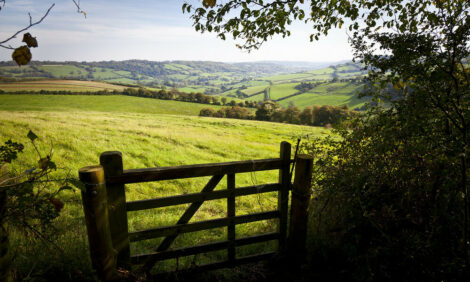



Drought Strategy: Wean the Calf, Salvage the Cow
Everyone is tired of hearing about drought. The skies are stark blue, usually considered nice, but most would appreciate some clouds and rain, writes Kris Ringwall, North Dakota State University.The point is this: The weather is nice and the cows are thin, so we need to feed them. Do not put off what is inevitable. Thin cows must be fed, and fall is a good time because the cows' nutritional requirements are low, especially if the cows are dry, and the requirements are easier to meet. Skimping on feed now is not a good plan.
If you want to stay in the cow business, wean the calf and salvage the cow. Wean the calf early, even if that means selling the calf. Add up the good cows and wisely stretch the feed.
If one needs to buy hay, why not plan on feeding when the cow can better use the hay? The longer one waits to add condition back onto a thin cow, the greater the battle.
The cow advances daily in fetal growth, and soon the third trimester will be here and the cow will need to be eating to support the accelerated growth of the calf. Plus, the harshness of winter will demand more thermal output to survive. Her daily feed intake will be needed to keep the calf growing and stoking her internal furnace.
To make matters worse, as soon as she calves, all hands will need to be on deck because milk production kicks in as the cow turns into a perpetual milking machine. Feed in, milk out.
So when hay is expensive, one should feed it when it will do the most good. Thin cows need to gain weight, and now is the time to do it with less feed. The cow is pregnant, but the fetus is not quite so demanding. She still feels good, not like in late pregnancy, when she has to carry well in excess of 100 to 200 pounds of extra weight balanced on legs and a pelvis meant to come apart on short notice. And the weather is still nice, so she does not have to set aside some of what she eats to simply keep warm.
The bottom line: Now is a good time to be nice to the cow and let her gain a little weight and put on some flesh. But in the traditional timing and business of fall work, missing this point is easy.
Skimp, skimp and skimp some more and hope the cows will make it until grass in the spring is poor planning. I was reminded of this the other day as I witnessed some cows short on feed. Thin cows always have that same look: cows, single file, looking for feed where there is none, cautious, with slight anxiety.
Early weaned, those thin cows have a chance to gain some easy weight now. Contrary to the tendency to let the cows rough it a little more in the nice weather, saving feed for winter is not a good idea. Next spring will get here and the cycle will start again, but for now, get some gain on those thin cows.
Thin cows need a nutritionist, as always, and every manager of a producing cow herd needs to understand the annual requirements of a cow and be prepared to have the appropriate feed available.
An often overlooked time period is right now. The cows are thin, and where does one see the cow herd wandering? Oftentimes, it's on very short pasture or barren cropland, none of which actually is growing anything. So what are they supposed to eat?
The ranch crew is busy managing all the newly weaned calves and getting ready for winter. A common thought is that the cows are not nursing calves anymore, so they simply can survive until we need to feed them. But that need usually is triggered only once the ground is white. I guess white equals feed and brown equals survival. After all, every week of saving feed is money in the pocket.
Well, that is not exactly true because once winter gets here (let's say early January), the cows are further along in pregnancy, many in their third trimester if they are going to start calving in April, and if they are going to start calving in March, well, by the first of December, they are already in their third trimester.
If one gets the gist of this conversation, yes, one can feed to the nutritional requirements of the beef cow; however, the many extenuating circumstances in late pregnancy and winter simply may not allow the replenishing of condition and muscle for her own well-being.
This process starts a vicious cycle in which the cows are calved too thin, the calves may be deprived of adequate colostrum, calves get sick and the cow does not rebreed in time to maintain a 365-day calving interval. If this cycle repeats itself for a year or two, the culling rate goes up and the overall health of the cow, and particularity the calf, is put in jeopardy.
So do not skimp in hopes of saving a few dollars, but rather reduce the cow numbers to meet the current appropriate feed inventory. Visit your nutritionist, and remember the weather is nice and the cows are thin, so feed them.


